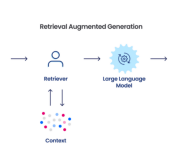Navigating HIPAA Compliance: A Deep Dive Into Secure Medical Dictation Software
Patient information needs to be analyzed and safeguarded just as much as the health of the individuals it applies to—and this is the cornerstone of HIPAA compliance as it stands today.
In this context, medical professionals must grapple with a twofold mission: to use digital tools that boost efficiency and ensure these tools are adequately equipped to prevent patient data being misused or stolen.
Secure medical dictation software takes on this challenge and conquers it, with a variety of compliant features found in tools that can also make life easier for the professionals who rely on it from moment to moment. Let’s look at how this particular niche of healthcare solution is stepping up to the plate and knocking it out of the park where HIPAA compliance is concerned.
The Anatomy of HIPAA-Compliant Dictation Software
When dissecting the features of secure medical dictation software, it’s critical to identify the aspects that not only make it a robust tool for clinicians but also a buttress against data breaches. With reports from Omida indicating that healthcare experiences over twice the number of cyberattacks as other industries – 241 global breaches in 2023 compared with just 91 for IT organizations – attention to detail is a foundational principle of protection.
With the right medical dictation software compatible with Mac and other platforms, you get Health Insurance Portability and Accountability Act (HIPAA) compliance through various facets of design, including:
- End-to-End Encryption: This is a minimum expectation not only for healthcare-focused software, but indeed any modern platform which sends information over a network connection. From voice capture to text conversion and storage, encryption ensures that intercepted data remains unreadable to unauthorized parties.
- User Authentication Protocols: Strong user authentication defends access points. Multi-factor authentication (MFA) is typically a requirement for compliance, and again holds relevance in a range of other software sign-in situations beyond medical dictation.
- Automated Log-off: To prevent unauthorized access from unattended devices, dictated notes are safeguarded by automatic timeouts that log users off after periods of inactivity.
- Audit Controls: Keeping track of who did what and when provides accountability and can be pivotal in tracing any misuse or infiltration attempts on patient information.
This combination exemplifies the depths developers dive into to shore up their offerings in conjunction with HIPAA’s stringent standards, while also enhancing usability for professionals on all types of devices.
Considering the Compliance Checklist
Adhering to HIPAA mandates is not a set-it-and-forget-it affair but rather a continuous journey of vigilance and adaptation. And while the digitization of records has helped reduce the loss and theft of physical documents, a 239% increase in successful hacks between 2018 and 2023 is a sign that providers and practitioners must keep pace with the malicious forces.
To do this, medical dictation software must incorporate:
- Risk Assessment Tools: Identifying potential vulnerabilities before they can be exploited is vital. Software should regularly analyze and patch any problems, rather than allowing smaller spots of corrosion to develop into weakened rusty patches.
- Data Backup and Recovery Plans: In an age where data loss can occur through myriad channels—malicious or otherwise—having secure and redundant backups is foundational for swift recovery.
- Breach Notification Protocols: When breaches do happen, prompt notification structures enable required parties to respond quickly and effectively to minimize damage.
- Contractual Agreements with Associates: Vendors and third-party associates must also comply with HIPAA regulations, bound by agreements that ensure all hands on deck are equally committed to data security.
The Bottom Line
Medical dictation software is just a single category of software tools that’s made up of many more available today, and the goal of streamlining healthcare workflows while improving care outcomes is admirable. It’s only through HIPAA compliance, achieved as discussed, that breaches and other data disasters are averted day by day.





























Leave a Reply